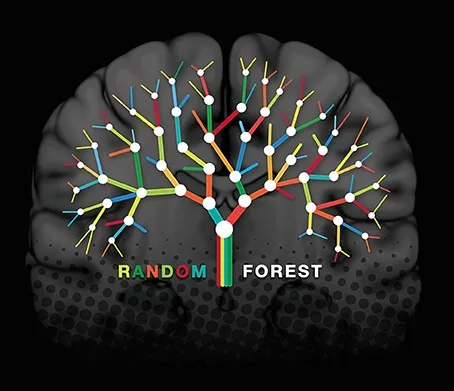In the vast realm of machine learning, the random forest algorithm stands as a towering presence, offering versatile and powerful solutions for various predictive tasks. With its ability to handle complex data, maintain accuracy, and mitigate overfitting, Random Forest has become an indispensable tool in the data scientist’s arsenal. In this article, we delve into the intricacies of the Random Forest algorithm, exploring its inner workings, applications, advantages, and more.
Introduction to Random Forest Algorithm
Random Forest is a machine learning algorithm that leverages the power of ensemble learning to enhance predictive accuracy. It operates by constructing a multitude of decision trees during training and outputs the mode of the classes (classification) or the average prediction (regression) of individual trees
How Does Random Forest Work?
At its core, Random Forest employs the principle of decision tree aggregation, also known as bagging (Bootstrap Aggregating). This involves creating multiple decision trees, each trained on a bootstrapped subset of the original training data. The randomness introduced in the process reduces overfitting and enhances the algorithm’s ability to generalize well to unseen data.
Ensemble Learning: Strength in Numbers
The strength of Random Forest lies in its ensemble nature. By combining predictions from various decision trees, the algorithm reduces the impact of individual tree errors, leading to more robust and accurate predictions.
Building Blocks of Random Forest
Understanding Decision Trees
Decision trees are the fundamental building blocks of a Random Forest. These trees partition data based on a set of features, recursively making binary decisions until reaching leaf nodes, which represent the predicted class or value.
The Concept of Bagging
Bagging involves randomly selecting subsets of the training data with replacement and training separate decision trees on these subsets. This diversity in training data contributes to the model’s overall robustness.
Combining Trees Through Voting
In the ensemble phase, Random Forest combines the predictions of individual trees through majority voting (classification) or averaging (regression), yielding a final prediction that is more reliable and accurate.
Training a Random Forest Model
Training a Random Forest involves generating a specified number of decision trees, each trained on a different subset of the data. The algorithm then utilizes these trees to make predictions. This process results in a more reliable outcome compared to a single decision tree.
Tackling Overfitting with Random Forest
Random Forest addresses overfitting by introducing randomness in two key ways:
Feature Randomness for Generalization
At each split of a decision tree, Random Forest only considers a random subset of features. This helps to prevent the model from focusing too heavily on specific features that might be outliers or noisy.
Tuning the Number of Trees
The number of trees in a Random Forest is a critical hyperparameter. As the number of trees increases, the algorithm’s performance on the test set initially improves but eventually plateaus. Finding the right balance is crucial to prevent both underfitting and overfitting.
Applications Across Industries
Random Forest finds applications across various industries due to its versatility and robustness:
Finance and Risk Analysis
In finance, Random Forest is employed for credit scoring, fraud detection, and stock price prediction, owing to its capability to handle complex financial data.
Healthcare Diagnosis and Prognosis
In the healthcare sector, the algorithm aids in disease diagnosis, patient prognosis, and medical image analysis, demonstrating its potential to improve patient outcomes.
Image and Speech Recognition
Random Forest plays a pivotal role in image and speech recognition, contributing to advancements in autonomous vehicles, facial recognition, and voice assistants.
Advantages and Disadvantages of Random Forest
High Accuracy Through Aggregation
The aggregation of multiple decision trees leads to higher predictive accuracy compared to individual trees.
Resilience to Outliers
Random Forest’s robustness to outliers and noisy data makes it a reliable choice for real-world datasets.
Handling of Large Datasets
The algorithm can efficiently handle large datasets without overfitting, making it suitable for big data applications.
Computational Complexity
The trade-off for its accuracy is increased computational complexity, requiring more time and resources for training and prediction.
Random Forest vs. Other Algorithms
Decision Trees vs. Random Forest
While decision trees are susceptible to overfitting, Random Forest mitigates this issue through ensemble learning.
Random Forest vs. Gradient Boosting
Gradient Boosting builds trees sequentially, whereas Random Forest creates trees independently and combines their outputs. Both approaches have their strengths depending on the task at hand.
Best Practices for Implementing Random Forest
Data Preprocessing and Feature Engineering
High-quality input data is essential. Preprocessing steps such as handling missing values and scaling features contribute to the model’s performance.
Hyperparameter Tuning
Finding the optimal hyperparameters, including the number of trees and the depth of each tree, greatly impacts the algorithm’s effectiveness.
Cross-Validation Techniques
Employing cross-validation helps assess the model’s performance on unseen data and aids in selecting suitable hyperparameters.
Future Innovations in Random Forest
Incorporating Deep Learning Techniques
Future iterations of Random Forest might incorporate concepts from deep learning to enhance feature representation and prediction accuracy.
Handling Sequential Data
Efforts to adapt Random Forest for sequential data, such as time series, could expand its applicability to more domains.
Conclusion
In the realm of machine learning, the Random Forest algorithm stands tall, offering accurate predictions, resilience to outliers, and the power of ensemble learning. Its versatility spans industries and domains, making it an essential tool for data scientists and machine learning practitioners. As technology advances, we can expect to see further innovations that will amplify the capabilities and applications of the Random Forest algorithm.



